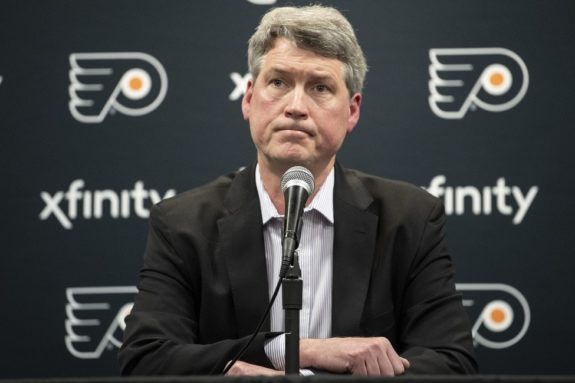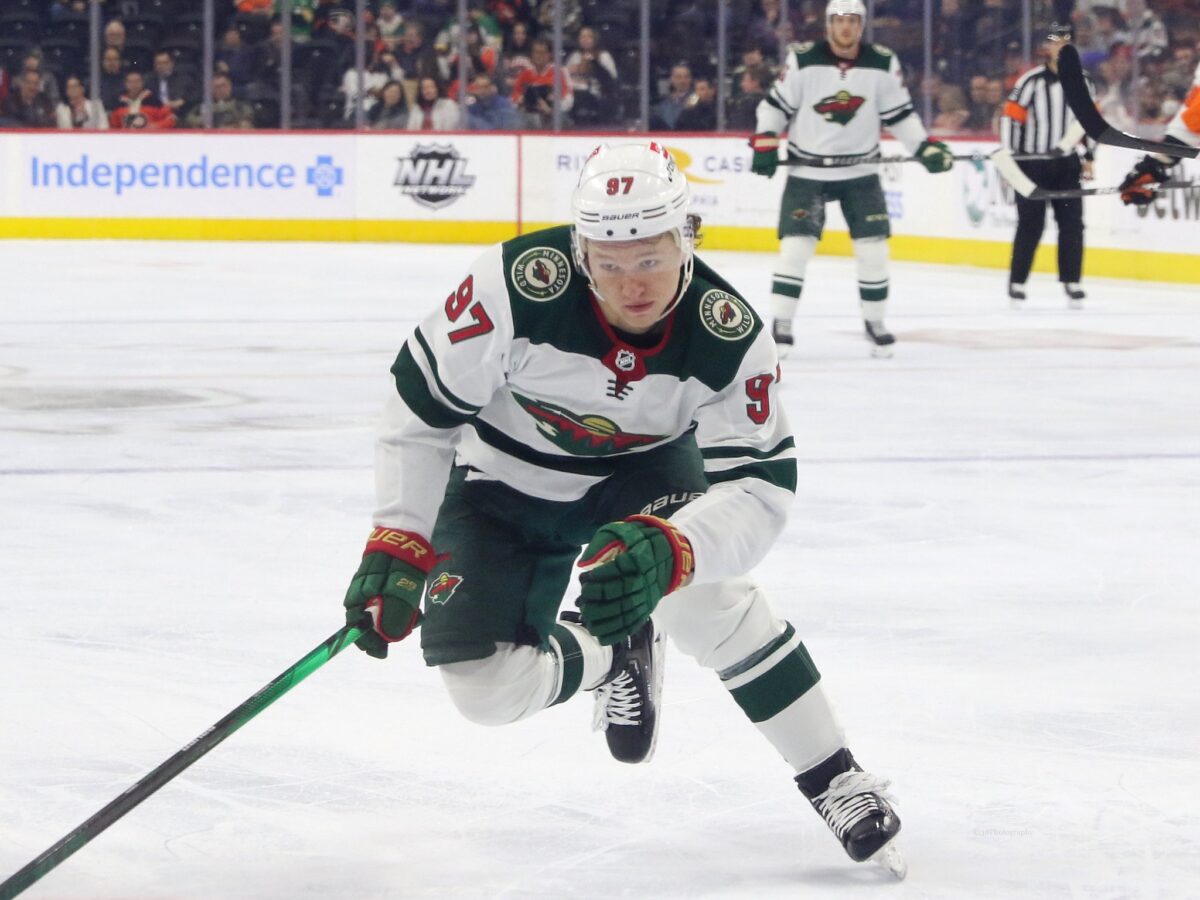The Philadelphia Flyers own the fifth-overall pick in the 2022 NHL Entry Draft in Montreal on July 7. They hope to use their premium position to address the glaring lack of “top-end talent” on their roster. The consequences of the selection will ring through the organization for years to come, as they have only drafted in the top five twice during the salary cap era. The consequences of general manager (GM) Chuck Fletcher’s selection will play a major part in determining the future of a franchise painfully struggling to rejoin the elite powers of the NHL. How confident should the organization be that he will make the right selection based on his past track record?
Track Record of Fletcher, Flahr with Flyers
Fletcher and assistant GM Brent Flahr, who oversees the scouting department, both started with the Flyers in December 2018 after working together with the Minnesota Wild for nine seasons. The Flyers have selected 18 players in the three drafts since. They currently hold six picks in the upcoming draft, one in each round except for the second.
The first three players selected by the current front office regime all took promising initial steps at the NHL level in 2021-22. Cam York, drafted 14th overall in 2019, built off a three-game stint in 2020-21 with 30 NHL games last season. He proved himself as a key piece to the Philadelphia blue line moving forward, and he will almost certainly begin the 2022-23 season with the big club.

Bobby Brink led the NCAA in scoring for the University of Denver, the 2021-22 National Champions. He immediately made the jump to the pros after the college season ended. While he had a strong showing with four assists in 10 games, he will likely begin the 2022-23 season in the American Hockey League (AHL). The Flyers should view him as a building block who can provide value on their second line in the future.
Ronnie Attard also made the leap to the NHL immediately after the NCAA season. He showcased some promising raw skill, but he will need more seasoning at the AHL level before he is ready to be a full-time NHL player. The realistic expectation that all three players have considerable NHL upside indicates a successful 2019 draft.
Lengthy injury absences to Tyson Foerster and Zayde Wisdom during the 2021-22 season make it even more difficult to assess a draft that took place just two years ago, but the two selections from 2020 still have legitimate aspirations to become NHL contributors. Foerster brings a dynamic skill set and a high upside uncommon among Flyers prospects. The organization’s emphasis on top-end talent and a shooter’s mentality certainly factored into the decision to select him 23rd overall, and the same points of emphasis could come into play in Montreal in July.
Related: 5 Flyers Targets with the Fifth-Overall Pick
Three of Philadelphia’s selections from 2020 improved their prospect stock significantly over the past two seasons. Second-rounder Emil Andrae, fifth-rounder Elliot Desnoyers, and sixth-rounder Connor McClennon pushed their way up in the consensus opinions of prospect experts. While Andrae and Desnoyers still hope for a future with the Flyers, the organization elected not to sign McClennon to an entry-level contract. He became an unrestricted free agent on Wednesday.
The Flyers dealt their first-round pick in 2021 as part of the trade to acquire Rasmus Ristolainen, and second-round pick Samu Tuomaala did not advance his development drastically in 2021-22. Late-rounders Owen McLaughlin and Ethan Samson signed Bona Fide Offers on Wednesday to stay within the organization one more year before they sign entry-level contracts.
Eye on the Minnesota Wild
The nature of the NHL Entry Draft and prospect development makes it difficult to assess the job done by a front office. The average tenure of an NHL GM is only five and a half years, so 18-year-old prospects who get drafted don’t frequently reach their prime NHL years while the GMs who drafted them into the organization are still in place. An assessment of Fletcher and Flahr’s tenure in Minnesota has the benefit of a longer time frame and a more holistic view of an organization’s success.

The Wild wrestled around in mediocrity for the majority of the time under the guidance of the current Philadelphia front office regime. Fletcher acquired their most notable top-end talent in free agency by signing Zach Parise and Ryan Suter during the summer of 2012.
However, Minnesota’s 2015 draft could provide a blueprint for the Flyers to get back on track. Fletcher selected Joel Eriksson Ek with the 20th-overall pick and struck gold with the low-risk choice of Kirill Kaprizov in the fifth round. Both players were key to Minnesota’s strong finish during the 2021-22 regular season.
The Flyers haven’t stumbled onto a breakout star like Kaprizov, who shattered Minnesota’s single-season franchise records with 47 goals and 108 points in 2021-22. If they can identify, select, and develop one player with higher upside to become the type of top-end talent they lack, their current pieces with a comparable skill level to Eriksson Ek will suddenly look much better in complementary roles.
Trust Level in Fletcher, Flahr
Fletcher and Flahr have done an acceptable job using the resources in front of them to stock the pipeline of prospects to become the 12th-ranked system in the NHL. However, they must face the harsh reality that finding a large quantity of middling NHL players who don’t make it to the league for three or four seasons after they’re drafted simply won’t suffice in 2022. If they don’t land the big star with the fifth-overall pick, they probably won’t stay around in Philadelphia long enough to see any other players develop.
Fletcher’s highest draft position in Minnesota was in 2012 when he selected Matt Dumba with the seventh-overall pick. While the veteran defenseman has had a solid NHL career since, the Flyers aren’t missing that caliber of secondary players who can fill out the depth of a roster well. They instead need the top-end talent that Fletcher discussed back in January, and if the front office can’t find it, major changes are on the horizon in Philadelphia.
